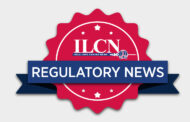
Investigator Karen L. Reckamp, MD, MS, who is Professor of Medicine and Director of the Division of Medical Oncology at Cedars-Sinai Medical Center, Los Angeles, recently spoke with ILCN about the implications of the phase II Lung-MAP study and the confirmatory phase III follow-up Pragmatica-Lung trial. In the coming weeks, get the regulatory perspective on Pragmatica-Lung when ILCN interviews the US Food and Drug Administration’s Harpreet Singh, MD, who is director of the Division of Oncology 2.
ILCN: What are the implications of the phase II Lung-MAP substudy S1800A, in which the combination of pembrolizumab and ramucirumab appeared superior to typical second-line therapy in metastatic non-small cell lung cancer (mNSCLC)?1 Specifically, the role of non-cytotoxic combinations of immune checkpoint inhibitors with monoclonal antibodies targeting angiogenesis?
Dr. Reckamp: S1800A was a robust, randomized phase II trial that met its primary endpoint, showing improved overall survival with the pembrolizumab/ramucirumab combination compared to standard of care, which included combination docetaxel and ramucirumab in two out of three patients. This overall survival benefit was seen across subgroups despite a lack of improvement in progression-free survival (PFS) or objective response rate (ORR).
These results imply that this combination may alter the tumor microenvironment to overcome some of the mechanisms of resistance at play. It is not clear whether this is specific to the monoclonal antibodies targeting angiogenesis, but we have not yet observed a similar outcome for VEGFR-targeting tyrosine kinase inhibitors (TKI) in patients with acquired resistance to prior immune checkpoint inhibition (ICI). The reasons may be related to toxicities seen with ICI and TKIs in lung cancer or implications of immune modulation in the tumor.
ILCN: Do you think the success of this study was due to the unique synergy that might exist between checkpoint inhibitors and angiogenesis inhibitors or the potential benefit of extending the use of checkpoint inhibitors beyond disease progression? Or both?
Dr. Reckamp: The results suggest that we are seeing a synergy with ICI and VEGFR antibody inhibition in this population. We are starting to see results of recent phase III trials that provide post-progression ICI in combination with VEGFR inhibition using TKIs and other therapies that do not demonstrate improved survival, so continuation of ICI is not likely to be enough for most.
ILCN: Please expand on the study design and objectives of the confirmatory Pragmatica-Lung trial and the unique role the US Food and Drug Administration is taking in this cooperative group effort. Specifically, comment on the goal of streamlining data entry and reducing data points and the workload of investigators and clinical research coordinators.
Dr. Reckamp: S2302 Pragmatica-Lung is a trial in the class of studies being called Pragmatic Designs. Specifically, a pragmatic trial is designed to inform decision-makers on the comparative balance of benefits, burdens, and risks of a health intervention. The trial asks, “Does this intervention work under usual conditions?”
Building upon the randomized phase II S1800A study, we are aiming to answer the question regarding overall survival very specifically. This is planned as a registrational, randomized phase III trial. Collaborative efforts with the FDA and the National Cancer Institute’s SWOG Cancer Research Network and Cancer Therapy Evaluation Program (CTEP) occurred early in the planning with the understanding that many standard processes would be different in this study and for other planned pragmatic trials.
The primary objective is to compare overall survival between participants previously treated with platinum-based chemotherapy and immunotherapy for Stage 4 or recurrent NSCLC randomized to pembrolizumab and ramucirumab versus standard of care. The only secondary objective is to summarize reports of serious and unexpected high-grade (≥ Grade 3) treatment-related adverse events determined by the treating physician within each treatment arm. By focusing on these two objectives, we can minimize the eligibility criteria and significantly reduce data collection and study monitoring. The goals of S2302 Pragmatica-Lung include empowering investigators to treat patients as would be done in their normal practice, decreasing barriers to enrollment, and minimizing the data collection burden.
ILCN: Do you think a compendium listing of combination pembrolizumab/ramucirumab or endorsement by the National Comprehensive Cancer Network a priori will “eat into” accrual on Pragmatica-Lung?
Dr. Reckamp: I believe most oncologists treating patients with advanced lung cancer see the data from S1800A as promising, but await confirmatory phase III results to change practice. The design and ease with which clinicians can enter and treat participants and collect data should engage investigators to open and enroll to the trial.
ILCN: Studies in the front-line setting for combination chemotherapy and bevacizumab suggest attenuation or lack of benefit for monoclonal antibodies targeting angiogenesis in advanced mNSCLC in the elderly, specifically those 75 and older. Was there any hint of that in the randomized phase II? Do you think this concern extends to non-cytotoxic combinations?
Dr. Reckamp: We have not formally analyzed the data from S1800A by age, but participants in both the ramucirumab and pembrolizumab arm and the standard-of-care arm had age ranges beyond 80 years. Participants in both arms used ramucirumab, but numbers above 75 are small. Given the reduction in grade 3 and higher toxicity with non-cytotoxic combinations, I do not have concerns in this group currently.
ILCN: The inclusion of Eastern Cooperative Oncology Group (ECOG) performance status (PS) 2 patients in the Pragmatica-Lung trial, as currently structured, is a concern for some investigators. Historically, PS 2 advanced NSCLC patients fare far worse than PS 0-1 patients, and there are no studies in PS 2 that have led to drug approvals. Moreover, the S1800 RP2 trial was restricted to mNSCLC patients with intact PS (0-1). Can you comment on the viability of this approach? Was this imposed by the FDA? If the PS 2 cohort fails to achieve a benefit, are there safeguards in place to make certain that statistical objectives can still be met in the PS 0-1 cohort?
Dr. Reckamp: In designing the trial, we continued to push the limits of comfort levels as the trial is meant to be paradigm-changing and inclusive to focus on how patients are treated in actual practice. The addition of participants with ECOG PS 2 was a conscious decision. The sample size of the trial and randomization are meant to balance the arms and tighten the confidence intervals to produce robust results.
References
- 1. Reckamp KL, Redman MW, Dragnev KH, et al. Phase II Randomized Study of Ramucirumab and Pembrolizumab Versus Standard of Care in Advanced Non-Small-Cell Lung Cancer Previously Treated With Immunotherapy-Lung-MAP S1800A [published correction appears in J Clin Oncol. 2022 Sep 1;40(25):3002]. J Clin Oncol. 2022;40(21):2295-2306. doi:10.1200/JCO.22.00912




